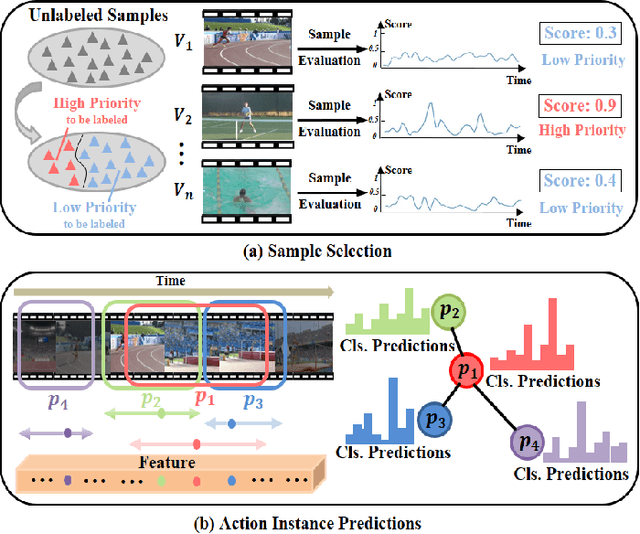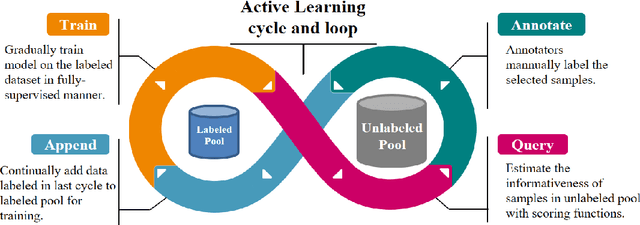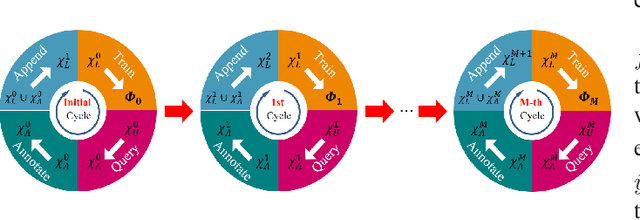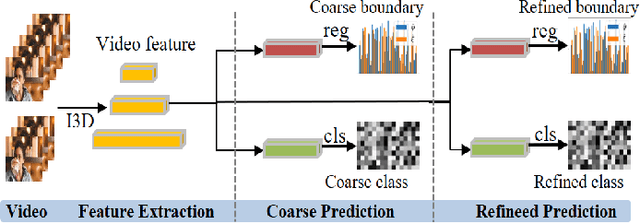Active Learning with Effective Scoring Functions for Semi-Supervised Temporal Action Localization
Paper and Code
Aug 31, 2022



Temporal Action Localization (TAL) aims to predict both action category and temporal boundary of action instances in untrimmed videos, i.e., start and end time. Fully-supervised solutions are usually adopted in most existing works, and proven to be effective. One of the practical bottlenecks in these solutions is the large amount of labeled training data required. To reduce expensive human label cost, this paper focuses on a rarely investigated yet practical task named semi-supervised TAL and proposes an effective active learning method, named AL-STAL. We leverage four steps for actively selecting video samples with high informativeness and training the localization model, named \emph{Train, Query, Annotate, Append}. Two scoring functions that consider the uncertainty of localization model are equipped in AL-STAL, thus facilitating the video sample rank and selection. One takes entropy of predicted label distribution as measure of uncertainty, named Temporal Proposal Entropy (TPE). And the other introduces a new metric based on mutual information between adjacent action proposals and evaluates the informativeness of video samples, named Temporal Context Inconsistency (TCI). To validate the effectiveness of proposed method, we conduct extensive experiments on two benchmark datasets THUMOS'14 and ActivityNet 1.3. Experiment results show that AL-STAL outperforms the existing competitors and achieves satisfying performance compared with fully-supervised learning.
 Add to Chrome
Add to Chrome Add to Firefox
Add to Firefox Add to Edge
Add to Edge